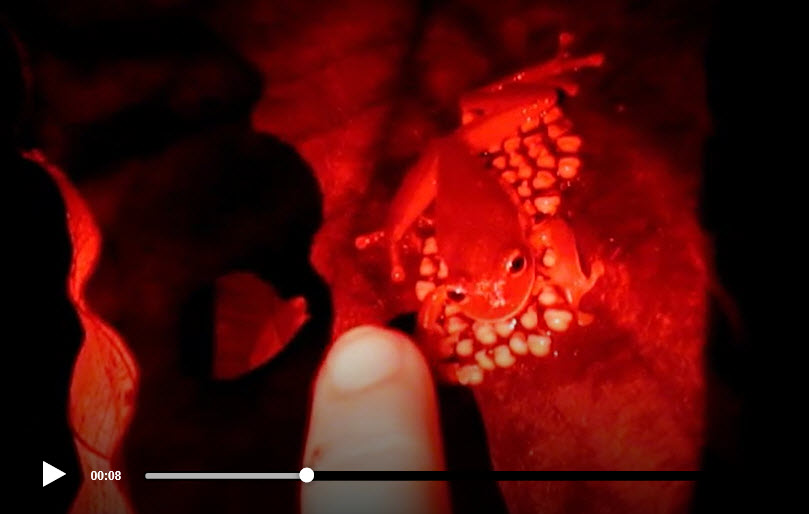Jesse Delia at The New York Times explores the darkness in search of a female glass frog.
It was around 4 a.m. And for Jesse Delia, a graduate student conducting fieldwork in Panama, it had been a long night. His project wasn’t going well, and he was ready to head home. On his way back from the stream where he had been working, he stopped by a spot to have another look at a mating pair of frogs he had seen earlier. It didn’t relate to his project, but he wanted to see what they were up to.
There, a female glass frog was sitting on her eggs. He tried to nudge her off, but she wouldn’t budge. This was unusual. The books said most glass frog larvae were on their own after fertilization. And for the rare cases in which larvae did receive parental care, it came from the father.
Was this for real?
After that night, Mr. Delia set aside his original project and embarked on a five-year quest with Laura Bravo Valencia, a graduate student at the Universidad de los Andes in Bogotá, Colombia.
Together, they spent rainy all-nighters along wet streams at 22 research sites across Colombia, Peru, Panama, Mexico and Ecuador to see if this parental behavior could be found elsewhere and, if so, how it evolved.
In a paper published Friday in the Journal of Evolutionary Biology, they reported finding that what was once thought about glass frogs was wrong. It turns out that possibly all glass frogs provide some form of parental care; whether it’s the male or female depends on the species. Male parenting most likely evolved from a female caring ancestor multiple times within the glass frog family history, and the type of care then became more elaborate.
The results of their research were also a reminder that fieldwork remains a valuable tool for discovery in an era of indoor genetic labs.
“We were completely wrong about what we thought was going on in this group, and by accident, by staying out a little too late, we found out all these other things,” said Mr. Delia, who studies parental behavior of frogs in the lab of Karen Warkentin at Boston University.
Over the course of their fieldwork, they observed 40 of 150 species of glass frogs under flashlights and discovered that in every species observed, either a mother or a father took care of the eggs at some point after fertilization, even if just briefly.
Most glass frog species stick around for only a few important hours when their young are most vulnerable. In a couple of species from Panama, during these hours, the mothers soak up liquid from leaves and deliver it to the eggs. This makes the jelly that surrounds the eggs so thick that predators are discouraged from eating them.
Finally, the team looked at how parental care may have evolved by looking at male-only and female-only care in different species along many generations of a family tree. The researchers determined that in the earliest glass frog species, care was most likely provided by females. But as males took over in some contemporary species, egg care became more elaborate. In some cases, males can care for eggs from multiple females at once, while continuing to mate.

